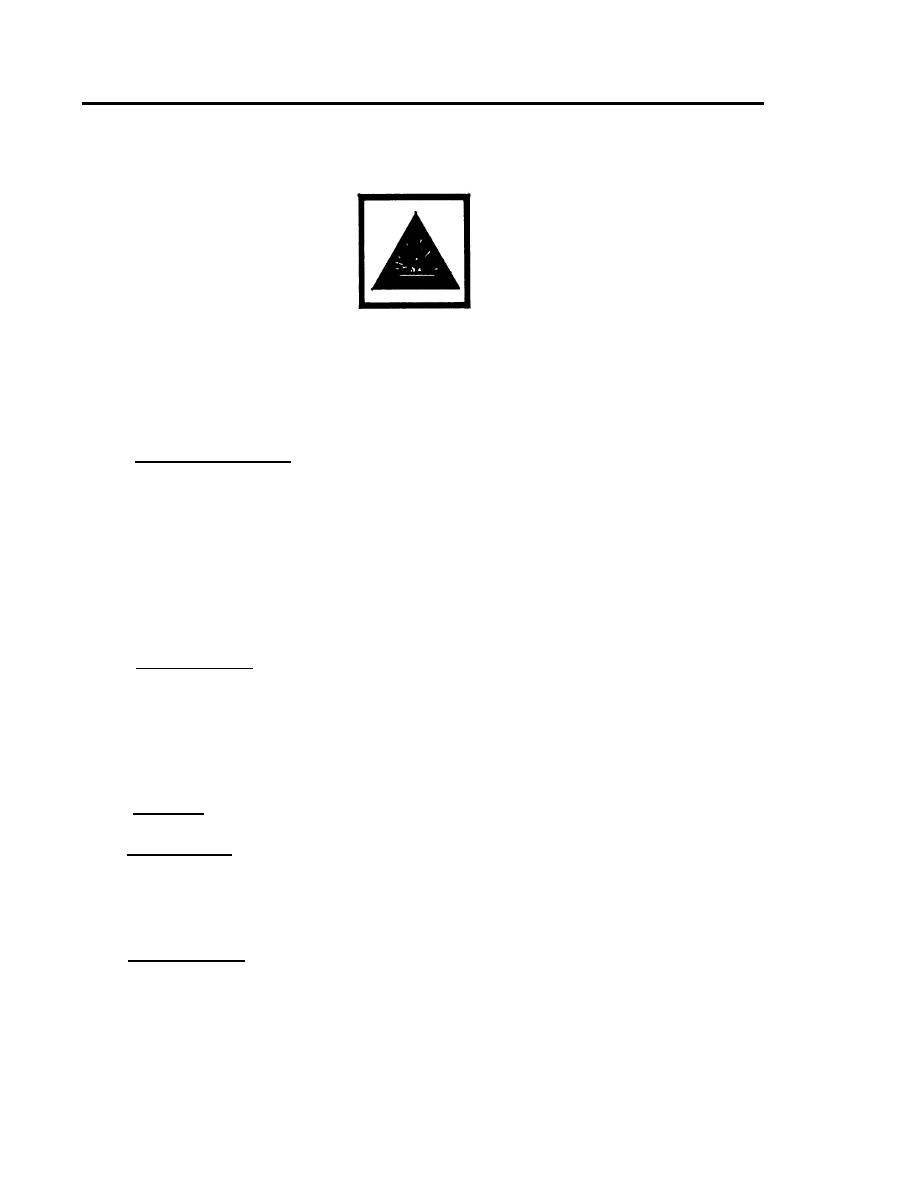
GENERAL DESIGN CONSIDERATIONS
DG 1110-3-112 May 1979
3-4 BUILDING DESIGN (cont'd)
Figure 3-6 Safety Marking
(11) Fire Protection Design. Criteria for fire protection, including fire and/or smoke
detection, fire
alarm and extinguishment systems, are prescribed in DoD 4270.1-M, TM 5-812-1 and TM 5-813-6.
These are generally based on the NFPA's National Fire Codes. Corridors, rooms and exits must
conform to the requirements for "flexible plan" buildings given in the NFPA Life Safety Code 101.
Single-line plans showing fire-rated construction, location of detection and alarm systems, the location
of exits and travel distances to them, areas where sprinkler and/or extinguishing systems are
provided, and the location of other fire protection features shall be developed and included in project
design analyses and completion records. These documents will indicate coordination of the fire safety
design with the installation fire marshal.
(12) Physical Security. The lock and keying system along with requirements for intrusion detection
and protective lighting must be coordinated with the installation facilities engineer. Normally, locks will
be grand master keyed to the installation's master key system and with the ACES Center keyed to a
sub-master key. The further need for master keys for selected parts of the Center should be
considered. Overall, the physical security system must be designed so that its operation can be
maintained effectively without interfering with life safety features.
(13) Acoustics.
(a) Ambient Noise. Ambient noise is the background noise associated with a given space. It is
generally a composite of sounds from mechanical equipment, street noise, and noise from nearby
habitable spaces. The design ambient noise level for each ACES Center space is given in Chapter 4,
Table 4-1 in terms of A-weighted sound levels in decibels (dB).
(b) Generated Noise. Generated noise is the estimated overall peak airborne sound level in a given
space, created by typical activities. The peak estimated sound levels for each individual space are also
given in Table 4-1 for consideration in determining noise compatibility. These levels are generally
10-15 dB higher than the average long-term levels should be for each respective space.
3-15



 Previous Page
Previous Page
